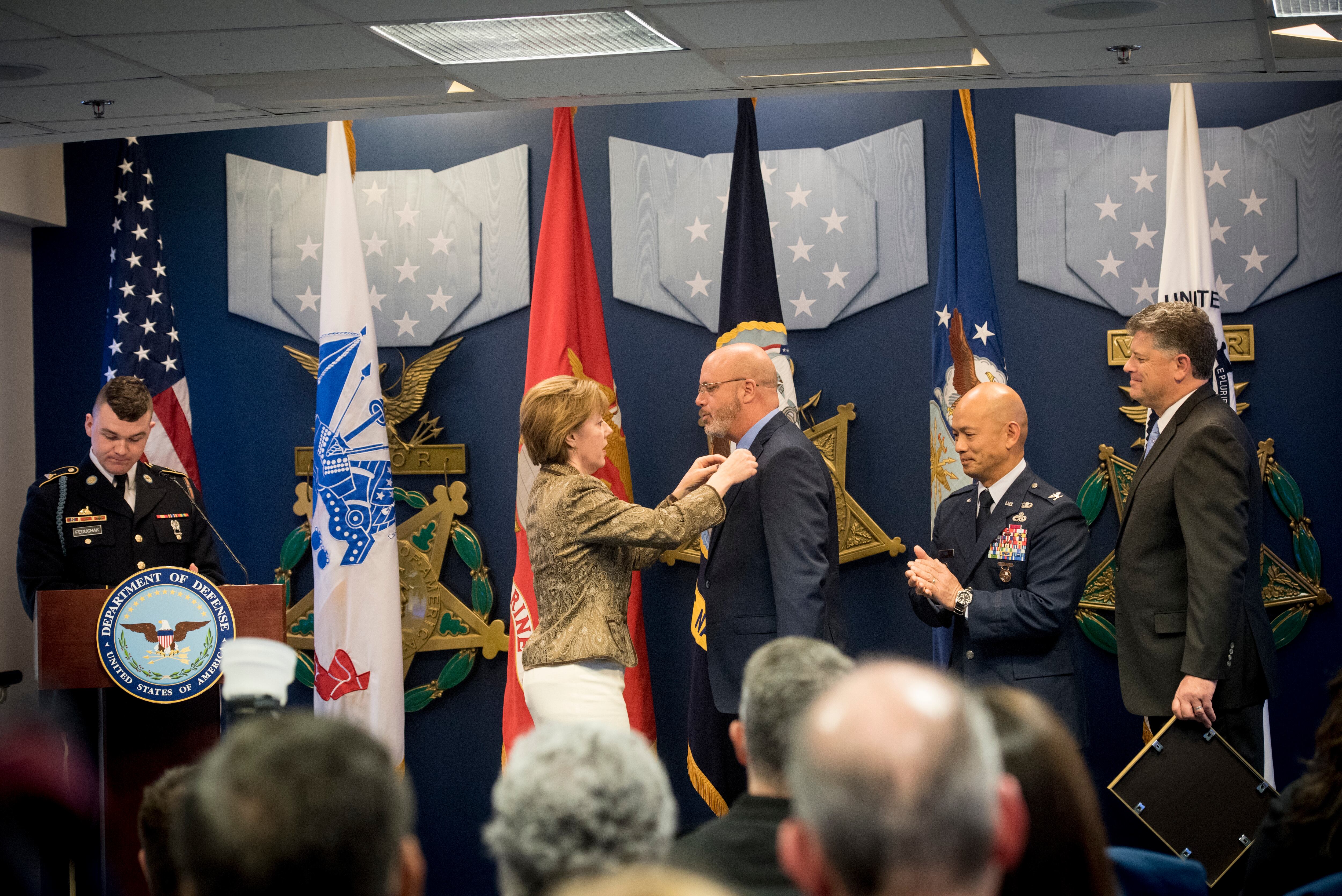WASHINGTON — Internal reforms to processes and the sale of “obsolete” military equipment helped the Pentagon find $6.5 billion in validated savings in fiscal year 2019, the department’s chief management officer has revealed.
That money is being put directly into war-fighting priorities, including maintenance for the F-35 Joint Strike Fighter and training needs, according to Lisa Hershman, who officially was sworn in as the department’s number three official at the start of January.
The savings are different from the $5.7 billion figure found through a comprehensive review of the department’s defense-wide agencies, which was announced last week. Those findings were through a specific review process, looking at the fiscal 2020 budget and figuring out where funds could be redirected for the FY21 budget request.
This amount, in contrast, is part of an annual efficiencies target, a required part of the CMO’s job, and reflects money found in FY19, which wrapped up at the end of September. The office previously found a combined $4.7 billion in FY17 and FY18. The White House Office of Management and Budget set a target of $6 billion in savings for CMO in FY19 — meaning Hershman’s team exceeded their target by half a billion dollars.
RELATED

Some of the savings found are fairly small, Hershman acknowledged, but she said that is fine under the guidance given to her by Secretary of Defense Mark Esper, who “has said over and over and over again, ‘nothing too big, nothing too small.’”
Hershman stressed that her goal is “transformation,” not simply cutting costs for short term gains, which will then sprout back up, or cause greater problems, down the road. As an example she pointed to changes in the commissary system.
“I can cut cost by shutting down commissaries," she said. "I’m not going to do that because it’s really important to my military personnel and their families.”
But, she noted, of the 1.4 million individual items that are stocked in the commissary system, almost a million of them produce less than $1,000 in revenue per year. There are also opportunities to find savings by not carrying items which simply don’t sell (get ready for the 23 brands of apple juice in the commissary system to get cut down).
“How do we consolidate, buy the things that people want, that will actually sell? How do we consolidate back office operations, [create] single a IT system where now we can share data? Those kind of things make sense, and that does cut costs,” she said.
The savings claimed by the CMO office include:
- Changes in fees applied to roughly $16 billion in annual TRICARE contracts led to $352.9 million in savings for FY19, with $2.4 billion projected through FY21.
- The Navy saved $97.9 million by procuring 10 Arleigh Burke-class destroyers under five-year contract models, which led to a 9.3 percent discount compared to the estimated cost for those buys under single-year contracts instead.
- Military health information technology changes, including changing how IT spending is baselined and moved over to more modern operating systems, saved $68 million.
- Improvement to fourth estate business operations, such as modernizing technology and updating business processes, reduced the total operating costs by $80.4 million for the Army, Navy, Air Force, CMO, comptroller’s office and the Defense Finance and Accounting Service.
- The sale of “obsolete equipment” brought back $407.8 million that could be reprogrammed for other priorities. The gear in question included nine older UH-60 Black Hawks through a GSA auction, 10 older US-60 Black Hawks sold to Afghanistan, 100 older MIM-104 Patriot missiles sold to the United Arab Emirates, and four older C-130 Hercules sold to Chile and the Philippines.
On the sale of military equipment, Hershman said her team was encouraged to shine “a light on what we have, what we’re using, what is aligned with our higher purpose, driven by the National Defense Strategy.” The sales also sent a message to allies that the U.S. is willing to part with the older gear that is no longer as relevant for expected future operations.
The savings found by CMO are being redirected to investments in war-fighting needs, including to Army and Navy training needs; sustainment on Air Force platforms, including the F-35, F-22, E-3, B-52, and B-1 aircraft, as well as intercontinental ballistic missile maintenance; additional contracts for “red air” training from outside vendors; cyber operations and digitalization efforts, including cloud migration; and “additional special operations force structure, acquisition workforce development requirements, background investigation requirements, and classified activities,” per a statement.
For FY20, the CMO’s target for efficiencies and savings has been set a $7.7 billion, an 18.5 percent increase over what was found in FY19. Hershman expressed confidence that target could be hit: “I wouldn’t say it’s easy. None of this is easy, but it’s definitely doable.”
Aaron Mehta was deputy editor and senior Pentagon correspondent for Defense News, covering policy, strategy and acquisition at the highest levels of the Defense Department and its international partners.







